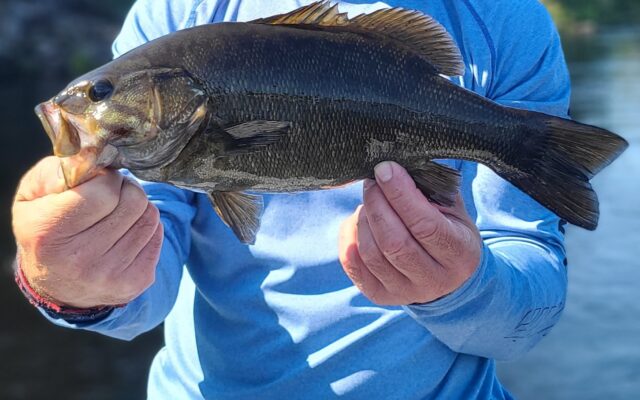
Proposed bass management changes in northern Maine are right move
By Bob Mallard
Make no mistake about it, nonnative bass are one of the biggest threats to Maine’s wild native salmonids.
Bass introductions have compromised all four native landlocked salmon waters, and imperiled endangered Atlantic salmon in the Penobscot watershed and Down East Maine. They have infested the Kennebec system, including Moosehead Lake and many tributaries. With bass now in the Rapid River, they are on the doorstep of the fabled Rangeley Lakes region and Kennebago watershed.
While we can never completely stop the spread of nonnative bass, nor can we undo where they are already established, we should do everything we can to discourage further introductions. Refusing to protect illegally introduced bass, or any species for that matter, is an important step that sends a loud and clear message — enough is enough.
This is exactly what the Maine Department of Inland Fisheries and Wildlife is proposing to do, and everyone who cares about Maine’s natural resources and outdoor heritage should support it.
For many years, nonnative bass were managed as a game species throughout Maine. In fact, they were generally afforded as much protection as the most protected wild native brook trout in the state — and notably more than many other fish populations.
As nonnative bass introductions increased and started spreading into wild native salmonid waters, DIF&W was under pressure to do something about it. They responded by creating the S-13 regulation, “no size or bag limit on bass,†and applied it to northern waters that had experienced recent introductions. DIF&W worked with anglers and advocates to post these waters with special signs encouraging the harvest of bass and discouraging bucket biology.
A few years later, DIF&W created two primary fisheries management zones: South and North. In the department’s own words, the North Zone “contains an abundance of wild and native coldwater fish populations,†while the South Zone “contains predominately stocked and/or warmwater fisheries.†This laid the groundwork for variations in regional management that took into consideration damage that had already been done, as well as the need to protect what wild native salmonids we have left.
Currently, bass in the South Zone are managed as a gamefish under a general law of two fish, only one above 14 inches. Conversely, bass in the North Zone are managed as an invasive species with a no bag or length limit general law. This is a compromise that recognizes angler preferences as well as biological realities. Some exceptions were made and special regulations protecting bass were imposed on 14 waters in the North Zone.
As part of a pending regulations package, MDIF&W Fishing Regulation Proposals for the 2024 fishing season, there is a section called “North Zone Bass Management.†Under the proposal, the 14 waters wholly in the North Zone with special protective regulations for bass will revert to the general law of no bag/length limit. This will create consistency within the North Zone with regard to bass regulations, as well as DIF&W’s stated goals pertaining to bass in their 2021-2035 Statewide Fisheries and Hatcheries Strategic Management Plan. Four waters with special protective regulations for bass that straddle the two zones will be moved into the South Zone and default to the protective general law.
To be fair, like many other states and the federal government, DIF&W is responsible for many of the introductions of nonnative bass in Maine. As recently as 20 years ago, DIF&W used stocking trucks to move bass from one water to another Down East where federally Endangered Atlantic salmon also lived.
Prior mistakes aside, we need to focus on the road ahead not the rearview mirror, and support what is a positive step forward in regard to nonnative bass management in what is the last stronghold for wild native salmonids in Maine.
The issue in regard to nonnative bass in the North Zone is about fish, not fishing. It’s about Maine’s history and part of what makes the state unique — wild native fish. It’s about conservation, not recreation, and placing a higher value on the health of the resource than what some people want to fish for. It’s science, not social.
Sportsmen have long claimed to be the best stewards of the resource. Defending nonnative fish and opposing biologically sound management is not good stewardship.
While Maine law requires that DIF&W listen to the public, and I encourage you to opine, the law doesn’t say they have to do what we ask them to do. The proposed changes to bass management in the North Zone are one of those times when DIF&W should agree to disagree with anglers and move forward as planned.
There are plenty of places in the South Zone to fish for bass. The North Zone should be managed for wild native salmonids, irrespective of what some anglers want.